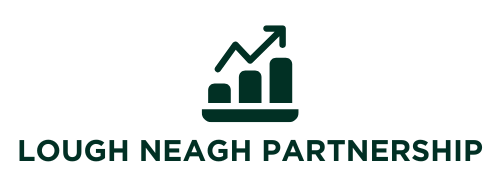Table of Contents
ToggleIn a world where every penny counts, mastering cost management is like finding a hidden treasure map. Businesses everywhere are on a quest to slash expenses without sacrificing quality. It’s a balancing act that would make even the most seasoned tightrope walker sweat. But fear not—effective cost management can turn your financial frown upside down.
Understanding Cost Management
Cost management involves planning and controlling budgets to maximize financial efficiency. Mastering this concept enables businesses to reduce expenses without sacrificing quality.
Definition and Importance
Cost management refers to the process of planning, monitoring, and controlling costs to achieve organizational objectives. Effective cost management plays an essential role in financial success, helping businesses allocate resources wisely. Organizations that embrace cost management enhance their profit margins and improve overall sustainability. Continuous attention to cost structures offers insights that drive informed decision-making. Ultimately, businesses that prioritize this practice position themselves favorably within competitive markets.
Key Components of Cost Management
Cost estimation forms the foundation of cost management, providing crucial insights into anticipated expenses. Budgeting follows, allowing organizations to set and adhere to financial limits. Cost control mechanisms ensure that businesses track actual spending against the budget. Variance analysis plays a critical role by identifying discrepancies and determining corrective actions. Lastly, regular financial reviews facilitate ongoing assessment and adjustments to cost strategies. Each component contributes to an integrated approach that promotes financial health and operational efficiency.
Cost Management Techniques

Cost management employs various techniques to optimize financial performance. Key methods include budgeting and forecasting, which play crucial roles in achieving cost control and organizational success.
Budgeting
Budgeting involves creating a financial plan that outlines expected revenues and expenses. This process helps organizations allocate resources effectively while setting spending limits. Many businesses use zero-based budgeting, where each expense requires justification, promoting cost awareness. Variability in budgets, such as flexible budgeting, adjusts according to actual activity levels, enhancing accuracy. Regularly reviewing budgets fosters accountability and aids in making informed financial decisions.
Forecasting
Forecasting predicts future financial conditions based on historical data and market analyses. This technique assists businesses in anticipating revenues and expenses, enabling proactive decision-making. Techniques like trend analysis and regression models provide valuable insights into potential financial outcomes. Sensitivity analysis evaluates risk by assessing how changes in variables affect outcomes, thus allowing organizations to prepare for various scenarios. Accurate forecasting strengthens financial strategies and supports sustainable growth.
Tools for Cost Management
Effective cost management utilizes various tools to enhance financial efficiency and maintain quality. Implementing the right solutions can significantly improve an organization’s budgeting and forecasting processes.
Software Solutions
Software solutions streamline cost management by automating processes and providing real-time insights. Tools like QuickBooks and Microsoft Excel simplify budgeting and tracking expenses, allowing businesses to monitor financial performance seamlessly. Additionally, platforms such as Tableau visualize data, facilitating informed decision-making. Other specialized software, like SAP or Oracle, integrates various financial functions for comprehensive management. By employing these tools, organizations can improve accuracy and enhance overall cost control.
Analytical Methods
Analytical methods serve as essential techniques in cost management. Organizations often rely on trend analysis to identify patterns in financial data. Regression models further provide insights into how variables affect costs and revenues. Sensitivity analysis evaluates the potential impact of changes in assumptions, guiding decision-making. Employing these methods results in a more profound understanding of financial dynamics, empowering businesses to make data-driven choices and adapt to changing circumstances.
Challenges in Cost Management
Cost management presents numerous challenges for organizations striving to maintain efficiency. Understanding these obstacles proves essential for effective financial planning.
Common Obstacles
Organizations often encounter insufficient data for accurate cost estimation. Incomplete or outdated information leads to inaccuracies in budgeting. Unforeseen market changes can also disrupt financial forecasts, placing strain on established budgets. Additionally, a lack of communication among departments results in misalignment on cost-related objectives. Resistance to change within organizational culture may hinder the successful implementation of cost management initiatives. Finally, over-reliance on traditional techniques can limit adaptability in the face of emerging financial challenges.
Strategies to Overcome Challenges
Utilizing advanced analytics enhances the accuracy of cost estimation. Implementing centralized data management systems fosters communication among teams. Creating a culture that embraces financial transparency encourages collaboration toward cost efficiency. Regular training sessions ensure employees stay informed about the latest cost management techniques. Adopting agile budgeting practices allows organizations to respond swiftly to market fluctuations. Continuous monitoring of key performance indicators equips businesses with insights to make informed decisions that effectively address financial obstacles.
Best Practices in Cost Management
Effective cost management relies on implementing best practices that enhance performance and sustainability. Organizations prioritize continuous improvement and employee involvement to achieve financial goals.
Continuous Monitoring
Monitoring costs consistently enables organizations to identify deviations from the budget quickly. Observing financial metrics, such as expenses and revenue, aids in maintaining alignment with organizational objectives. Implementing key performance indicators provides real-time insights, facilitating informed decisions. Regularly reviewing financial data can also reveal trends that help predict future costs. These insights empower teams to adjust strategies proactively, ensuring that cost management remains dynamic. Utilizing dashboards that visualize data enhances communication across departments, fostering collaboration and transparency in financial practices.
Employee Involvement
Engaging employees in cost management fosters a culture of financial accountability. Encouraging team members to contribute ideas for cost-saving initiatives promotes a sense of ownership. Training sessions on budgeting processes can improve understanding and efficiency across departments. Recognizing contributions from employees underscores their importance in achieving financial targets. Incorporating feedback from staff ensures that diverse perspectives inform budgeting strategies, leading to more comprehensive solutions. This approach strengthens collaboration and motivates individuals to take initiative, resulting in a more effective cost management process.
Mastering cost management is vital for businesses aiming to thrive in a competitive landscape. By implementing effective strategies and utilizing modern tools, organizations can navigate financial challenges while enhancing their operational efficiency. Embracing a proactive approach not only improves profit margins but also fosters a culture of accountability among employees.
Continuous monitoring and open communication are key to maintaining alignment with financial objectives. As businesses adapt to ever-changing market conditions, a commitment to innovative cost management practices will ensure long-term sustainability and success.








